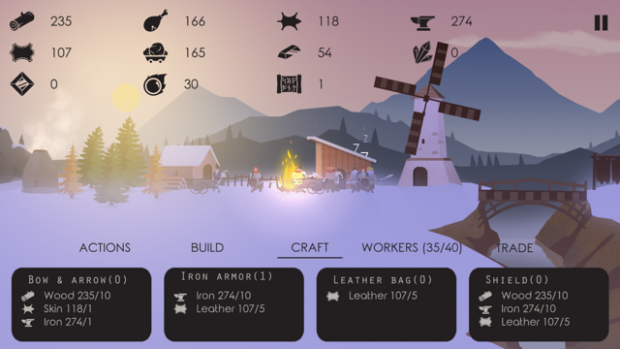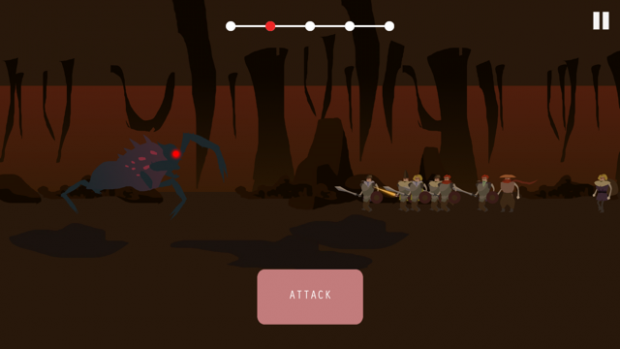 I have been cycling through a lot of games lately that have very busy interfaces and give explicit instructions on every aspect of the game. Through unskippable tutorials and heavy hand holding, it feels like these games force feed you the info they think you need to be convinced to not uninstall their app. Xigma Games latest offering, The Bonfire: Forsaken Lands ($3.99), is an effervescent tonic to the plague of over information we seem to be in the midst of.
I have been cycling through a lot of games lately that have very busy interfaces and give explicit instructions on every aspect of the game. Through unskippable tutorials and heavy hand holding, it feels like these games force feed you the info they think you need to be convinced to not uninstall their app. Xigma Games latest offering, The Bonfire: Forsaken Lands ($3.99), is an effervescent tonic to the plague of over information we seem to be in the midst of.
The Bonfire is a game where you will be directly and indirectly navigating the choices of a settler who is setting out to combat a great evil. You start by gathering raw materials and making crude structures by yourself. As you build places to work and sleep, wanderers will visit you willing to live and work in your village. It is your job to apply your burgeoning workforce in a balanced way to the tasks of protection, gathering, exploration and supplying. The game cycles between day and night where night cycles tend to focus on how well fortified you are and day cycles being the primary working time. The control scheme is minimal and helps accentuate a design philosophy championed by games like Alto’s Adventure ($4.99), Monument Valley ($3.99), and Prune ($4.99).

The immediate goal set forth in The Bonfire is survival and construction, and is highly reminiscent of another fantastic mobile game Kingdom: New Lands ($4.99). The controls really mesh well into the idea that you only have control over so many things as a leader, and you can decide to get involved in defense or production but after a while you will notice your contributions pale in comparison to workers equipped with the right tools for the job. More building and crafting options open up as you build your tiny village. Workers all have specific traits as well as hunger and energy levels that all impact how well they do the jobs you assign them.
The hero of the story is measured by how effective you are at cultivating a society capable of waking an avatar to fight for your cause. Beyond the story, there is a score you will accrue based on a number of metrics including game completion speed and whether or not you played on the hardcore difficulty that the game offers. Normal mode allows you to reload the game to the day in which you die, but hardcore immediately ends the game upon your first death. There is a learning curve to surviving in The Bonfire, and even a bigger one in learning how to maximize your score. Unless you like paying for mistakes heavily, you may find the hardcore mode too punishing until you beat the game for the first time. Hardcore is where the game will find its replayability. Once you win the first time, the real challenge will be putting up the highest score possible and the largest source of points is found by leaving normal mode behind.

Gathering materials is the spark that opens up building and crafting options. Once buildings are constructed or tools are crafted, you can assign workers to new jobs. The cycle repeats itself as these new jobs open up new materials, new building and new exploration options. Any time you might feel stuck in the game, there is usually a job, building, or crafted item that has not been pursued and while you will not find any hints in game, the one I would give you is to do everything and make everything possible when you find yourself stuck and you will soon be back on your feet working towards a new objective. I can confidently say I have not found any jobs in this game that are 100% useless nor have I found any jobs that must be 100% staffed at all times, which opens up a lot of room for maximizing the efficacy of your workers.
In a lot of ways this game is a mirror of an iOS classic, A Dark Room ($1.99). Both share very similar control and society development schemes. More importantly, they both offer an interface that forces you to jump into decisions without any type of suggestion or hint of what is to come. This mystery and joy of discovery is a powerfully rewarding combination. While The Bonfire has a beautiful veneer, A Dark Room tells a slightly more compelling story (which, if you are not familiar with, it’s worth a download!). While I did enjoy the story of The Bonfire, it does not take center stage. The journey and the view are much more central to the core experience here. Seeing your workers toddle about and your guards trudge along allows you to connect with the game in a way that A Dark Room doesnt really have any analogue for.
If you decide to pick up The Bonfire, it might be for the spirit of discovery and adventure, or it might be for the artistic quality and simplicity. It may even be for the fact that so many great games seem to be comparable to this one. Whatever your decision is predicated on, there is so much here to enjoy. A certain zen tranquility exists playing the game. Even if you were to constantly be re-allocating workers to maximize production and push for a high score, the simple act of existing and working that you see the hero and the village going through has a therapeutic quality that is well worth the price tag.